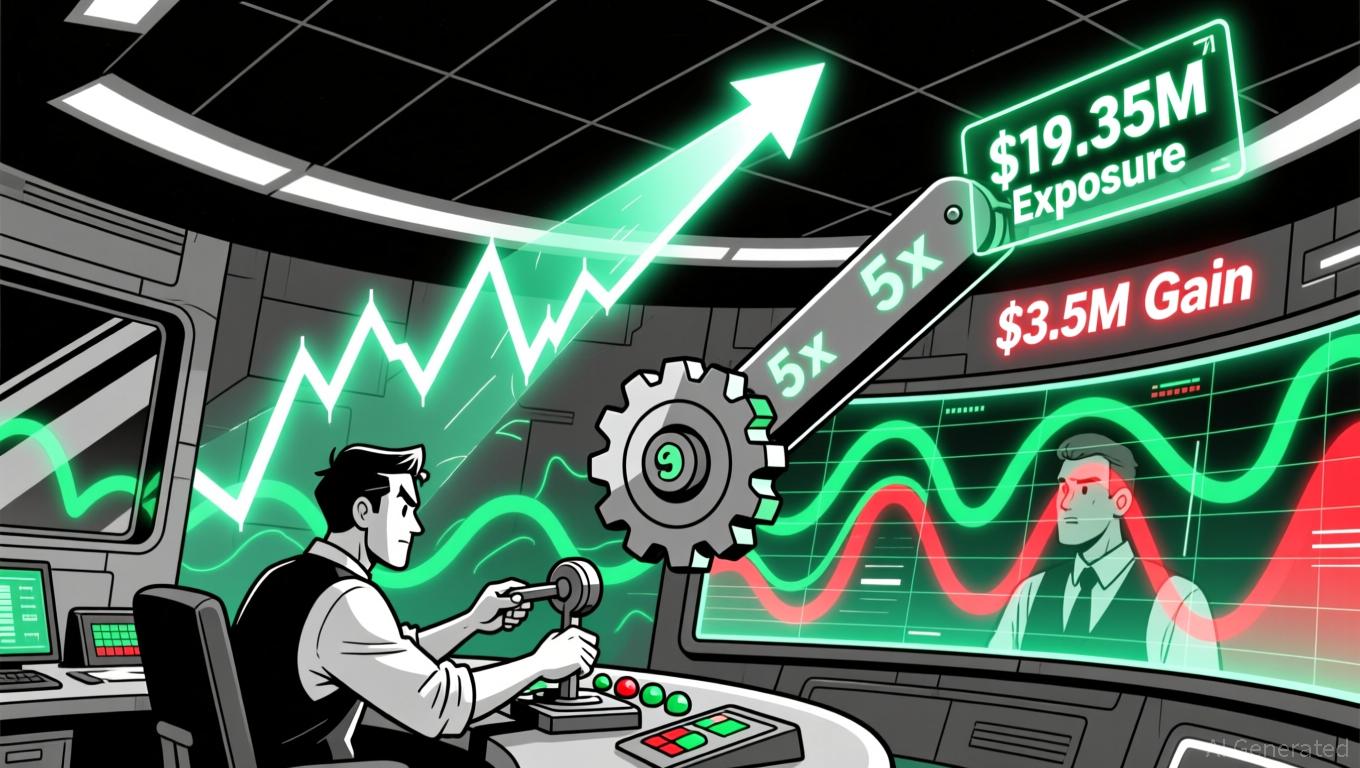Bitcoin’s Steep Drop: An Ideal Combination of Economic Headwinds and Systemic Threats
- Bitcoin's 30% plunge from its October 2025 peak exposed systemic risks amid Fed's restrictive policy and 3% inflation persistence. - $1.27B in leveraged liquidations and CFTC's spot trading plans amplified volatility, linking crypto risks to traditional finance. - Institutional buyers like MSTR continued aggressive BTC accumulation, raising questions about market distortion during crises. - Investors must monitor Fed policy shifts, regulatory clarity, and leverage management as crypto's systemic vulnerab
Macroeconomic Headwinds: The Fed’s Firm Stance and Persistent Inflation
The Federal Reserve’s steadfast approach to maintaining a “somewhat restrictive” monetary policy has cast a persistent shadow over riskier assets, including
At the same time, escalating global trade disputes, especially between the U.S. and China, have injected further instability. While companies may have temporarily absorbed some tariff-related expenses, as
Systemic Risks: Leverage, Regulation, and Chain Reactions
The 2025 downturn was not solely the result of macroeconomic trends—it was intensified by internal weaknesses within the crypto sector. In November, a
Regulatory developments added to the volatility.

Institutional Paradox: Stabilizers or Sources of Instability?
Paradoxically, the very institutional investors once seen as bringing stability to crypto are now raising alarms. Strategy (MSTR), for example, has continued to amass Bitcoin even as prices dropped,
The Road Ahead: Adapting to a Changed Landscape
For those investing in crypto, the takeaway is unmistakable: systemic risks are now a reality, not just a theory. The combination of leverage, regulatory shifts, and macroeconomic cycles has created a highly unstable environment. Key areas to monitor include:
1. Federal Reserve Policy: Even a suggestion of rate reductions could trigger a brief rally, but underlying risks will remain until inflation is decisively managed.
2. Regulatory Developments: The CFTC’s leveraged trading proposals could either inject much-needed institutional capital or further destabilize the market.
3. Managing Leverage: Both individual and institutional investors must employ sophisticated risk management tools, from derivatives hedging to
Conclusion: Urging Prudence and Transparency
The Bitcoin crash of 2025 serves as a stark reminder. The issue extends beyond price declines—it’s about the underlying weaknesses in the system. As economic pressures persist and regulatory landscapes shift, the crypto sector must confront a fundamental question: Is it merely a speculative vehicle, a hedge, or something different altogether? For now, the answer is uncertain. But one thing is clear: ignoring systemic risks could prove costly for investors.
Disclaimer: The content of this article solely reflects the author's opinion and does not represent the platform in any capacity. This article is not intended to serve as a reference for making investment decisions.
You may also like
Vitalik Buterin Backs ZKsync: Accelerating Ethereum’s Expansion and Advancing Layer 2 Solutions
- Vitalik Buterin endorses ZKsync's Atlas upgrade, highlighting 15,000 TPS, $0.01 fees, and bridging Ethereum's Layer 1/2 liquidity. - ZK Stack innovation reduces capital fragmentation while Airbender prover enables 2-GPU L1 block proofs, advancing Ethereum's scalability. - ZKsync now holds 15% Layer 2 TVL with 50% ZK token surge, but faces 60x performance gaps and competition from Arbitrum/Optimism. - Upcoming Fusaka upgrade targets 30,000 TPS by December 2025, while Kohaku privacy framework addresses ado
Investment Prospects in Layer 2 ZK Technologies After the ZK Atlas Enhancement
- ZK Atlas Upgrade (Oct 2025) boosts blockchain scalability via modular ZK solutions, enabling 15,000–43,000 TPS with $0.0001 per transaction costs. - Ethereum gas fees dropped 90%, TVL in ZK rollups hit $3.5B by 2025, with Deutsche Bank adopting ZK-rollups for institutional settlements. - Deflationary tokenomics drive capital efficiency: buybacks, burns, and staking rewards attract institutions, supported by $15B in Bitcoin ETF investments. - Analysts project 60.7% CAGR for ZK Layer-2 solutions, reaching
ZEC rises 6.32% in 24 hours as Hyperliquid holds a $19.35M long position
- ZEC surged 6.32% in 24 hours to $538.2 on Nov 22, 2025, despite a 9.7% weekly drop, with 36.25% monthly and 879.76% annual gains. - A $19.35M ZEC long position on Hyperliquid (5x leverage) shows $3.5M unrealized gains, highlighting institutional bullishness amid price volatility. - The leveraged position underscores amplified risks/rewards, with narrowing gains signaling market uncertainty and the need for cautious monitoring of macroeconomic/on-chain trends.

Bitcoin Updates: Billions Flow Out of Bitcoin ETFs While Stablecoins Strengthen as Core of Finance
- BlackRock's IBIT Bitcoin ETF recorded a record $523M outflow, pushing November's total U.S. spot Bitcoin ETF redemptions to $2.96B amid Bitcoin's 30% price drop. - Analysts link the exodus to weak fundamentals and macroeconomic uncertainty, with ETF outflows and long-term holder sales tightening liquidity and eroding investor confidence. - BlackRock filed for an Ethereum staking ETF as stablecoins surge in cross-border finance, processing $9T in 2025 payments while Bitcoin ETFs face sustained outflows an
